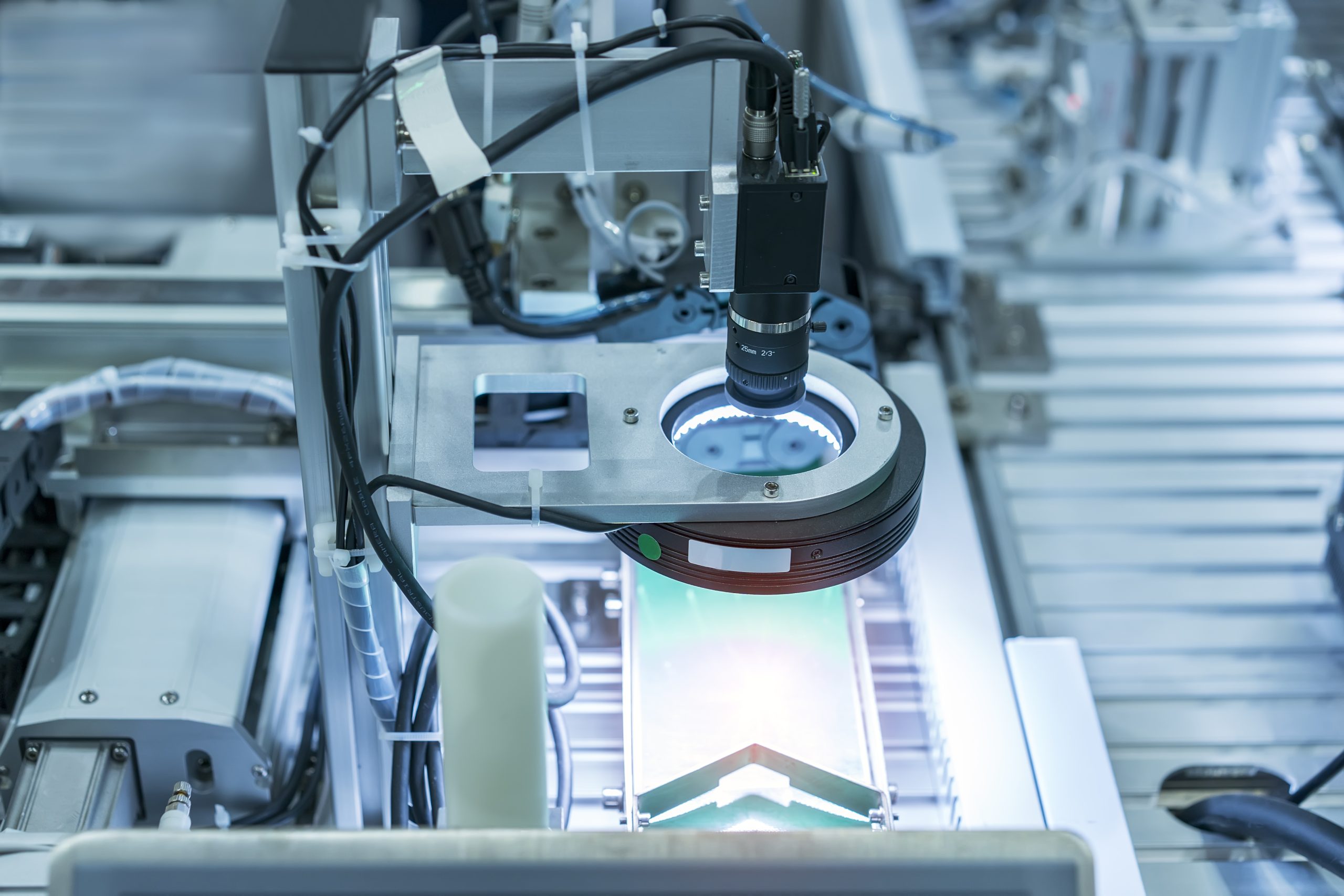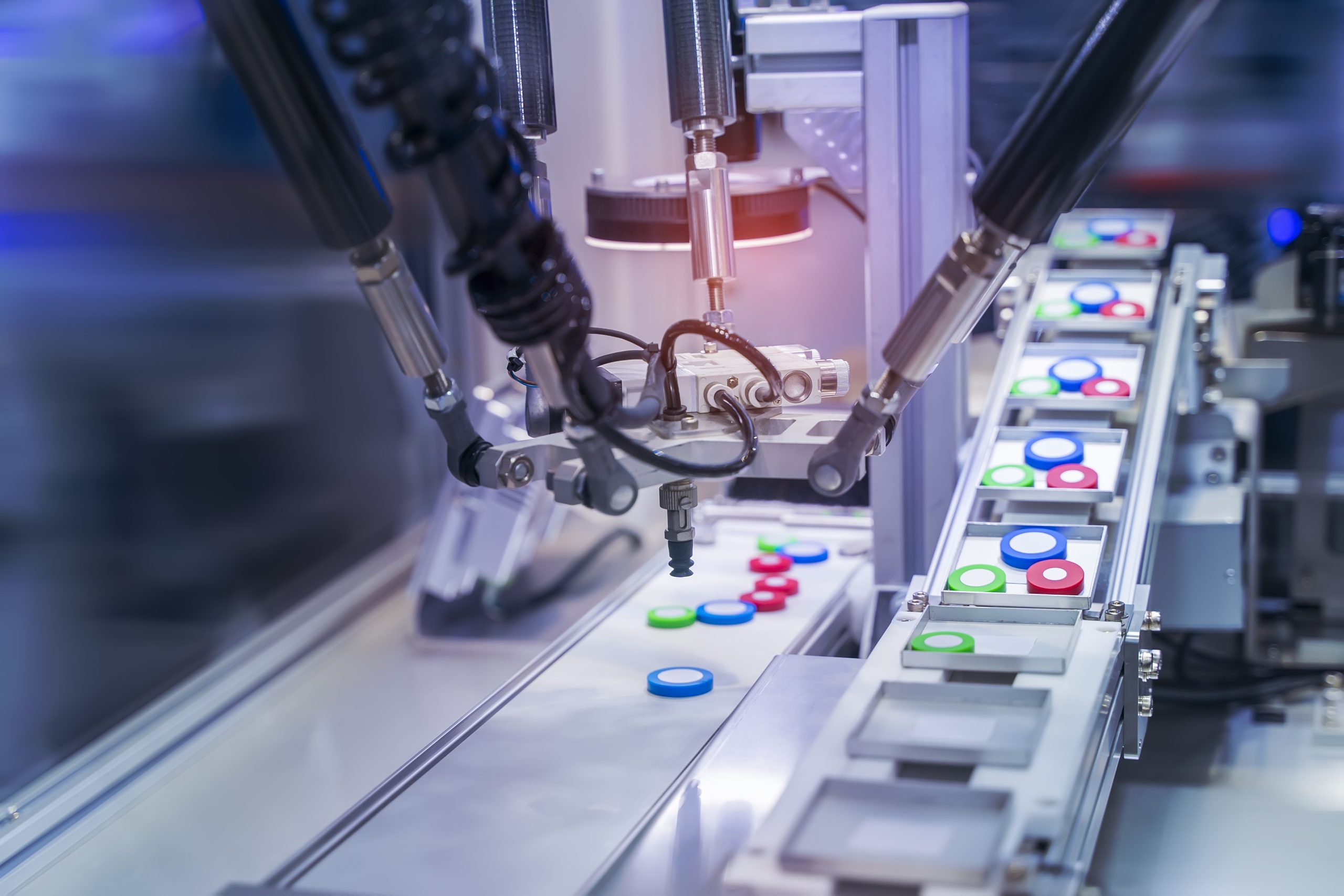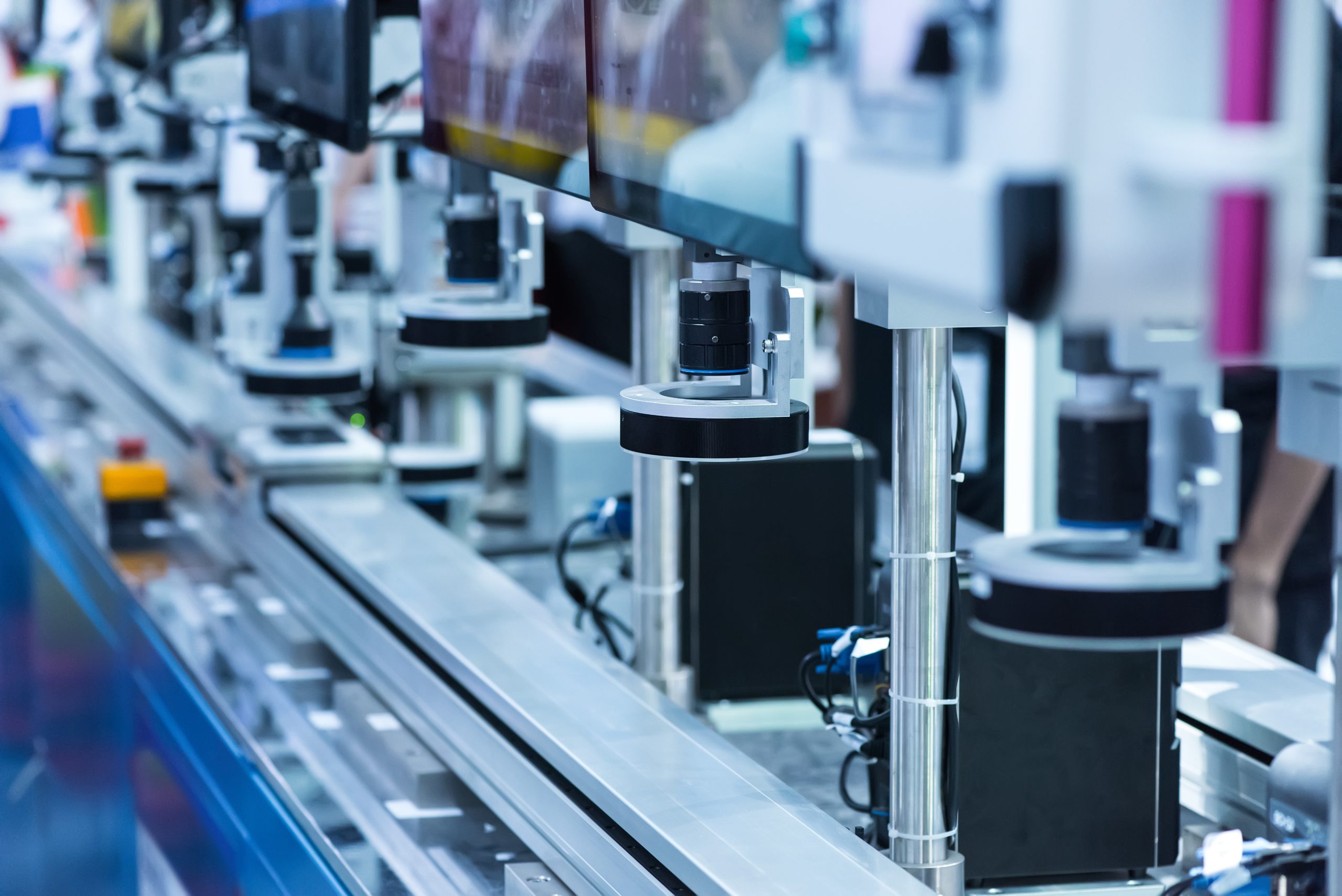Abstract
This white paper explores how modular machine vision lighting can enhance system flexibility, reduce development time, and simplify component selection. By allowing in-field adjustments through interchangeable optical elements, modular lighting systems help engineers adapt to varying inspection requirements. The paper outlines key design considerations, trade-offs between modular system types, configuration options, and highlights how this approach can support long-term system adaptability in industrial automation.
Effectively using modular machine vision lighting to simplify component selection, reduce development time, and future-proof the inspection process requires understanding several key design considerations
Industrial inspection, quality control, and robotics all depend on machine vision, which has become a key component of modern automation in manufacturing. Delivering a machine vision system that meets the application requirements on schedule and on budget demands that engineers balance development time, system performance, and cost during the design phase.
Because choosing the right light for machine vision can make or break the application, engineers need to carefully evaluate not only the inspection environment — including sensor and optical train characteristics, as well as part presentation and other factors — but also understand how a light’s wavelength and geometry influence object-light interactions. The ultimate goal is to enhance image contrast and achieve robust vision system performance.
When designing a vision system, making the optimal illumination choice can be challenging. Submitting an application evaluation to a machine vision lighting supplier requires that engineers provide as much information as possible. Evaluation starts with a part description and characterization of the features that need to be detected, as well as appearance variations or actual samples of good and bad parts.
The process of specifying the right machine vision light will likely also include information on inspection cycle times, desired exposure time or shutter speed, as well as the minimum and maximum working distances, field of view (FoV), space constraints within the equipment, environmental considerations, and other essential factors.
Modular illumination solutions address some of these challenges by meeting a variety of unique application requirements. Modular machine vision lighting may not only offer different wavelengths and sizes, but also can include optical accessories that make it possible to alter lighting geometry, pattern, beam (illumination) angle, and usable FoV to provide added flexibility in the field.
This whitepaper provides an overview of modular machine vision lighting, and discusses the advantages and trade-offs of the technology; it also explores key design considerations, recent advancements, and best practices for implementation.
Modular Machine Vision Lighting Defined
Perhaps no other aspect of vision system design and implementation has consistently caused more delay, cost-overruns, and general consternation than lighting. Playing a crucial role in enabling machines and robots to see and interpret the world around them, proper machine vision lighting enhances the vision system’s ability to acquire high-quality images, which positively impacts the accuracy and reliability of image analysis.

Recently, modular machine vision solutions have gained popularity by offering interchangeable components that provide flexibility and adaptability in the field. Providing a level of customization that meets a variety of application needs, modular machine vision illumination systems can be adapted on the fly to meet specific requirements by swapping out lenses, light conditioning films, or other components.
Instead of trying to figure out what light is right for the application, especially in cases where all the requirements may not be 100% nailed down, modular machine vision lighting allows engineers to purchase a light that can be adjusted in the field to meet a variety of requirements. For example, if unsure of the exact FoV requirement, engineers can purchase a modular lighting system that includes optical elements and light conditioning films that can be swapped out in the field to figure out what works best for their application.
Modular Machine Vision Lighting Benefits
Offering several advantages over traditional fixed lighting systems, modular machine vision lighting can be an attractive option for various industries and applications. Because e machine vision applications significantly vary based on object characteristics such as surface texture, color, the object-camera orientation, lighting geometry, environmental conditions, and lighting technique used, vision systems designers increasingly seek modular illumination solutions.
The benefits of modular machine vision lighting include simplifying the light selection process, reducing development time, and providing adaptability and customization options, as well as cost reduction and future-proofing vision systems deployed in live production environments.
Simplify Machine Vision Light Selection
One of the primary benefits of modular machine vision lighting is simplifying the process of specifying an optimal light for a given application. This is especially helpful for applications where all of the requirements may not be known at the time of purchase. Because modular machine vision lighting can be adapted for various applications, a single modular lighting kit can be tailored to meet a range of different application requirements, ensuring optimal performance across various scenarios.
The benefits of modular machine vision lighting include simplifying the light selection process, reducing development time, and providing adaptability and customization options, as well as cost reduction and future-proofing vision systems deployed in live production environments.
Reduce Development Time
After analyzing the application requirements and any sample parts sent, lighting suppliers often test the light before making a recommendation and shipping a demo unit or loaner to the customer. Sometimes, due to incorrect assumptions, bad project scope, or misconceptions, the demo unit may not fulfill all of the application requirements.
In such instances, reevaluating, updating application information, revising the lighting solution, and shipping demo units back and forth can eat up weeks of development time, throwing the project off schedule. Modular machine vision lighting systems include optical accessories that can be swapped out in the field to change the lighting geometry, pattern, beam angle, and usable FoV. This minimizes the need to ship demo units back and forth and can help reduce the time it takes to develop the application.
Adaptability and Customization Options
Inspection of different parts requires various capabilities and features from the chosen illumination system. Modular machine vision lighting systems offer adaptability to different spaces and environments as well as extensive customization options that allow users to create various unique compositions.
The flexibility that interchangeable optical elements and light conditioning films provide allows the tailoring of machine vision lighting systems to meet specific application requirements and ensure optimal performance across various scenarios.
By packing many capabilities into a single lighting unit, modular machine vision lights provide vision engineers with an extremely versatile tool that can be calibrated to meet the exact requirements of the application. This includes adjusting such factors as light intensity, light conditioning and beam angle — all with a single lighting system tailored to optimize imaging results for a wide range of applications.
Cost Reduction
Many vision system engineers rely on a well-stocked machine vision lab that includes several different types of lights with a variety of lenses and light conditioning materials to work with. When testing various lighting schemes on a part for a specific application, vision engineers attempt to enhance the features of interest and create a set of rules that enable a vision system to easily distinguish between conforming and non-conforming parts.
Modular machine vision lighting can save money by replacing several different lights with a single unit that allows engineers to adjust beam angle, beam directionality, polarization, diffusion, beam shape and more, in the field. This allows engineers to achieve various lighting characteristics without purchasing multiple lights. The ability of modular machine vision lighting to simplify the light selection process and reduce development time also saves money and time on redesign work that can cause project delays.
Future Proofing
Even after a machine vision system is complete, changes may still be required to get the illumination system right if the design location and final installation have different ambient lighting conditions. Also, part and process changes can impact the performance of an installed machine vision system, causing it to fail in the live production environment.

By offering capabilities such as altering the lighting geometry, pattern, beam angle, and usable FoV by swapping various optical elements and light conditioning films in the field, modular machine vision lighting gives engineers the flexibility to cope with such challenges and quickly adapt the illumination to accommodate these types of changes as well as others that may occur in the future.
Comparison of Modular Lighting Design Types
The effectiveness of a modular machine vision light is determined by the interplay between its optical performance and its configuration mechanism. The choice of technology affects the light’s output efficiency, uniformity, and ease of use in the field. Three primary designs dominate the market: position-adjusted spherical lens arrays, swappable diffusers, and swappable Total Internal Reflection (TIR) lenses.
Position-Adjusted Spherical Lens Arrays
This design uses a single array of spherical, fixed-focal-length lenses. To change the beam angle, the entire lens array is mechanically repositioned at different standoff distances from the LEDs. While this adjustment is conceptually simple, it often requires removing the light from its mount or disassembling end caps, adding complexity and time to the configuration process.
The primary drawback, however, is optical. These lenses are optimized for only a single standoff distance. Using them at non-optimal positions results in poor light coupling, leading to significant efficiency losses, reduced uniformity, and potential aberrations that negatively impact image quality.
Swappable Diffusers
Another approach relies on swappable diffusers or light-conditioning films that clip over a light’s existing lenses. This method offers a fast and simple way to alter light dispersion, but the convenience comes with significant compromises. This design is the least efficient optically. It suffers from two distinct sources of loss: poor coupling and low light transmissivity inherent to the diffuser material itself, resulting in unfocused illumination and a substantial reduction in output.
Swappable TIR Lenses
Swappable Total Internal Reflection (TIR) lenses represent the most effective approach, engineered to maximize both performance and configurability. Each TIR lens is designed for a specific beam angle and fully encapsulates each LED, ensuring better optical coupling. This maximizes light transmission and produces a highly uniform output – a critical advantage in demanding, high-speed applications where a TIR system can be nearly twice as efficient as a spherical lens system and provide 4X the efficiency of a system using swappable diffusers.
This design is available in two configuration styles:
- Individually Swappable Lenses: This configuration allows for the design flexibility of a modular system with the performance benefits of TIR lenses but requires changing each lens one-by-one which can be more time-consuming.
- Arrays of Swappable Lenses: This option fixes multiple TIR lenses into a single swappable holder. It provides the ideal balance, combining the rapid configuration of swapping a single component with the high optical efficiency inherent to the TIR design. This delivers bright, uniform illumination while offering efficient field configurability.
Conclusion
Modular machine vision lighting offers numerous benefits including simplifying the light selection process, reducing development time, adaptability, potential cost reduction, and future-proofing the machine vision system. By understanding the key factors to consider in modular lighting design, vision engineers will be better able to harness the full potential of modular machine vision lighting.

Discover the benefits and trade-offs of modular machine vision lighting.
Download the full white paper (PDF) to dive deeper into the topic.
Want more flexibility and faster development in vision projects?
Click the link below to talk with our application experts.